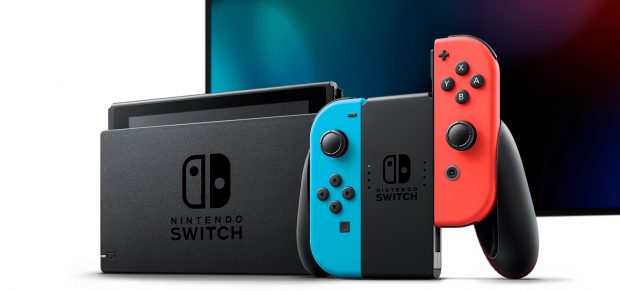

Switch Pro rumours ramp up, yet again, and some predictions
If there’s been one consistant thing that’s managed to ground us in this turbulent time, it’s Switch Pro rumours. Yep, every six months like clockwork, we get a brand new batch to tickle the pickle of Nintendo faithful. There’s been a whole bunch this time though, coming from various different news outlets. Such so that it’s starting to really look like the early phases of a new hardware launch. So maybe it has legs this time.
Bloomberg has been reporting that a revised Switch model will feature an upgraded Nvidia chip that’s capable of 4K graphics. It will also feature a new 7” OLED display and be priced at $399 USD. The financial news outlet is also predicting a Holiday 2021 launch.
As for performance, one Reddit post I saw claimed that it will be on par with the Xbox One X and PS4 Pro. Which is… very unlikely. This news apparently came from another Bloomberg article that’s conveniently only available to corporate subscribers, and locked behind a rather high paywall. It was later clarified that the jump will be similar to the leap from the Xbox One to the One X, relatively speaking. So roughly three times as powerful.
In terms of that performance, I can only speculate given that Nintendo keeps a tight lid on their projects. DLSS keeps coming up, and as we noted in our previous articles on the subject, that requires at minimum a Turing GPU. Nvidia’s upcoming Tegra “Orin” SoC will run the latest Ampere architecture. However the company doesn’t expect it to release until 2022. The rumours seem to indicate a custom design this time around though, rather than re-purposing existing hardware.
I’m going to take a stab at predicting what will go into this. I think we can expect performance in the ball park of the launch Xbox One. This isn’t entirely outside the realm of possibility. Higher end mobile phone SoCs can already achieve that level of performance. Especially once you get active cooling involved to the degree where they can sustain their boost clocks.
The last time we talked about this, I had predicted that Nintendo would use the off-the-shelf Tegra Xavier 10w SoC. Particularly titillating was its “NX” codename. Which in hindsight probably just stands for Nvidia Xavier. Duh. However, I think I was on the right track. According to an old Anandtech article, the launch Switch consumes 11w of power at load while docked. Given that battery technology hasn’t improved all that much since 2017, I think Nintendo is still going to target a 10w TDP for a pro-model. Though they may go as high as 15w if they can keep the thermals in check, and ramp it down for handheld mode.
When it comes to the CPU, I think they’ll opt for Nvidia’s existing Camel micro-architecture, a 12nm design based on the ARMv8.2-A instruction set. Now the current Tegra X1 is technically an 8-core chip. But the way it works is it combines four high power cores with four low power ones. The latter of which cannot be accessed by developers. These are rather assigned by the OS for background tasks in order to improve battery life. Nintendo might stick with this design, with a quad core Camel chip with additional low power cores. Though Nvidia does make an 8-core variant of the Xavier. I think realistically it’ll be a quad core clocked at between 1.2 and 1.4GHz.
Now for the GPU. All signs seem to point towards an Ampere chip. It will likely feature 384 CUDA cores, up from the 256 Maxwell cores in the current SoC. From here, we can actually extrapolate a ballpark performance figure based on Nvidia’s lower end Turing-based laptop GPUs. Namely the MX250, which is a 10w chip itself.
Ampere is roughly 1.5x faster than Turing in raw 32-bit floating point performance. In the most optimistic case, a GPU with a 1.0 GHz clock, that should give us 1.2 TFLOPS of processing power. That actually should get us pretty close to the launch Xbox One. Remember that Ampere is a more efficient architecture than AMD’s GCN1 chips used in the non-pro XBone. So it can do more with fewer FLOPS. Plus it has some newer features and optimizations that matter more to gaming performance. I think a more likely scenario is an 800MHz clock, with about 1.0 TFLOPS. Which is still more than double the Switch’s current performance. And before anyone gets any crazy ideas, it will not support ray tracing. Games still take a massive hit with RTX on, even on desktop GPUs. There’s no way a mobile GPU can handle that without everything running like a slideshow.
As for memory, it’ll probably be 8GB of LPDDR4X on a 128-bit bus, running at 56 GB/s realistically. Though the option is there for a faster 256-bit bus at 137 GB/s. Bandwidth and memory limitations have been a concern for developers, so any improvements here are going to be a wise investment.
That just leaves DLSS, which requires Nvidia’s FP16 optimized “Tensor Cores”. Currently, neither low end laptop chips, nor their SoCs, feature them. So it’s difficult to speculate on just how many it’ll have, or how powerful they’ll be. It depends on what DLSS requires to upscale to 4K. Probably no more than 112 cores though, as that’s what’s in the current desktop RTX 3060.
That’s my educated guess. It’ll be interesting to see how accurate this pans out to be. Assuming of course Nintendo is actually developing a Switch Pro, or New Nintendo Switch, or whatever people are calling it. Right now, the current Switch and Switch Lite are selling like gangbusters. So it’s not as if there’s much incentive to release new hardware right now. Especially with ongoing chip shortages. Yet it’s certainly a very tempting thought. Especially if older Switch games can be patched to take advantage of the newer hardware. A stable 30fps in games like the Switcher, without the liberal use of dynamic resolution scaling, would certainly be a godsend. Of course, and I’ll keep reiterating this until I’m blue in the face, Nintendo absolutely has to fix the Joycon drift issue before they even think about any other hardware.


